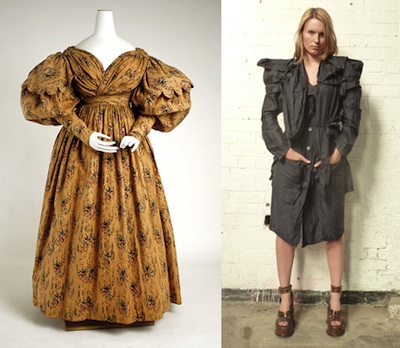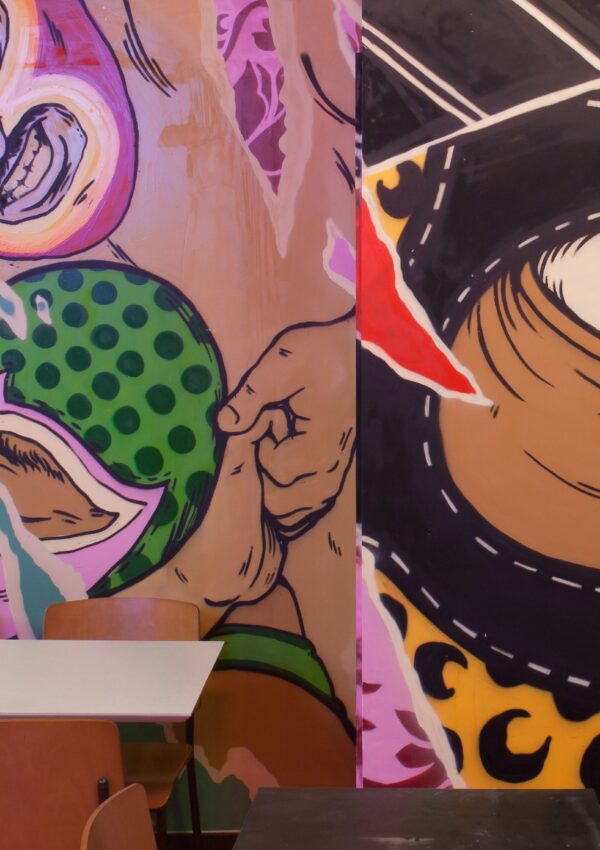The column by fashion academic and writer Pearl Westwood, which takes a look at current trends and delves into the past. Discovering that today’s style influences can come from decades ago and worlds gone by, it will have you exclaiming ‘Fancy that!’
What is the difference between summer and winter? Sartorially speaking of course, it is a little something called sleeves, and with sleeves come shoulders. Personally I am a big fan of, well, big shoulders. Depending on your age they will most likely recall memories from either the 1980’s – think Dynasty, power suits and power ballads. Alternatively the more recent phenomenon known in fashion circles as ‘Balmania’ – the crazy which followed after Balmain sent big shoulders down their spring/ summer 2009 runway. Now if these huge, tennis-ball smuggling shoulders weren’t your thing, fret not, they aren’t going to be back again this season. The shoulder which is making its way to autumn/ winter 2013 is a much subtler, softer sister known as the Gigot sleeve.
It is still a statement shoulder in the respects that it will give your garment a very appealing quality; however it is more of a romantic whisper. First coming into fashion in the 1830’s the Gigot from the French which translates as Leg ‘O Mutton, wasn’t as timid as its modern counterpart. Huge, poufy, billowing sleeves with tight lower cuffs to counterbalance, hung from the top of the arm and off the shoulder, they gave a wonderful romantic feel – so big that sleeve plumper’s were required (historical shoulder pads). Skip forwards a few years to the 1890’s and the Gigot had a face lift, literally the sleeve was pulled back up on top of the shoulder so as to give more of a point, gradually tapering down to the wrist.
The Gigot sleeve has never quite been forgotten, appearing now and then in one form or another, however for next season it has really picked up on a few designers radars. Vivienne Westwood has made this design, taken from her S/S12 Gold Label runway collection available more permanently in her Worlds End collection. The dress has wonderful Gigot sleeves in a thin cotton so that you can puff them up or let them scrunch down for a relaxed look. Alber Elbaz has always been a fan of a Gigot sleeve but for Lanvin AW13-14 he chose sumptuous velvet with delicate floral embellishment.
The 1980s were a time of excess, the economy was flourishing and people had more disposable income. The power-suit became popular armour for women entering the work place in larger numbers. The Great Recession is officially documented to have lasted between 2007-2009, just as we saw Balmain’s huge shoulders hit the runway, a sign women were fighting back perhaps? The state of the economy has often been said to be seen reflected in fashions, particularity hem lines (see the Hemline Index). For 2013 it is predicted the growth rate will hold steady, setting the stage for growth in 2014. Is the sight of these gentle Gigot shoulders, reflecting this? Only time will tell but one thing that is for sure, the Gigot is the perfect style statement for the coming colder months.
By Pearl Westwood (@pearlwestwood)
Image credits:
1830’s dress: www.metmuseum.org/Collections/search-the-collections/80036077
1890’s dress: www.museumofcostume.co.uk/exhibitions/current_displays/new_rapid_response_cases.aspx
Vivienne Westwood: worldsendshop.co.uk/vivienne-says-you-should-buy-these-dresses/#more-972





